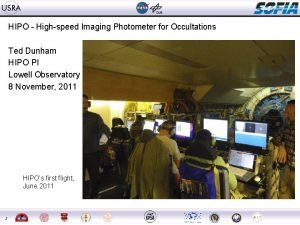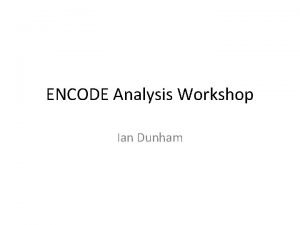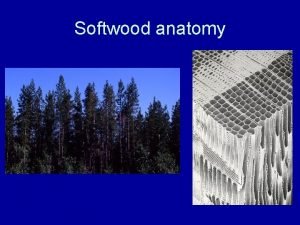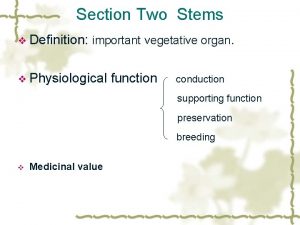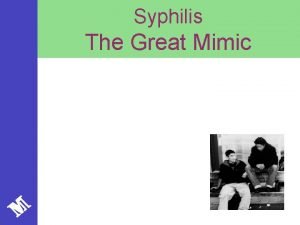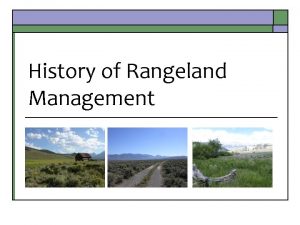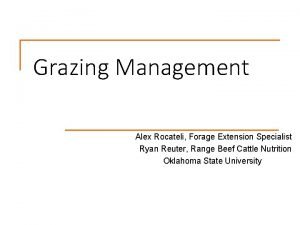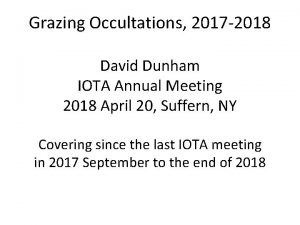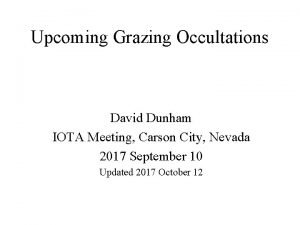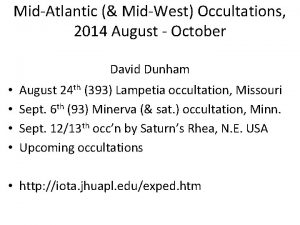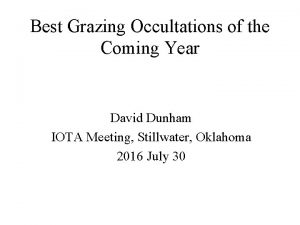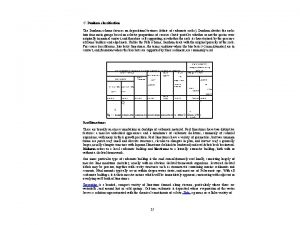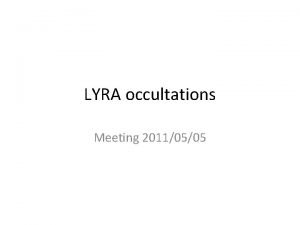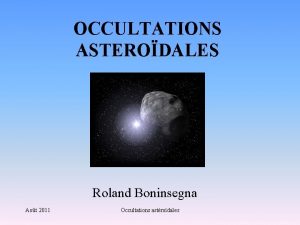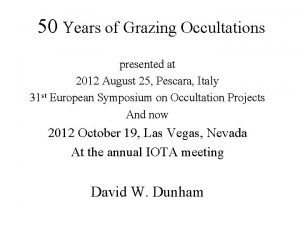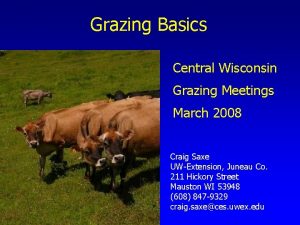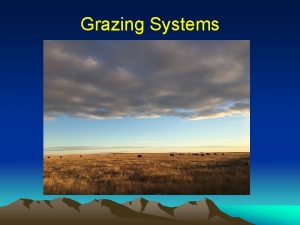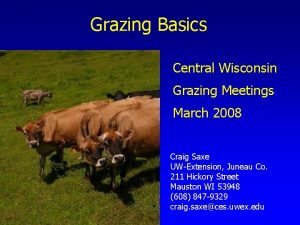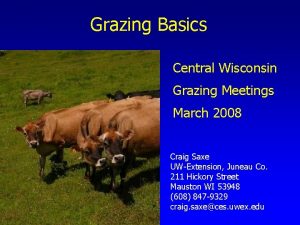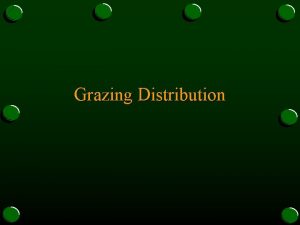Grazing Occultations Late 2018 Early 2020 David Dunham



























- Slides: 27

Grazing Occultations Late 2018 -Early 2020 --- David Dunham Online IOTA Annual Meeting 2020 July 25 --- Covering since the last full IOTA meeting in 2018 April, including some lunar totals A few others are still observing grazes, but this presentation only reports on grazes observed by Joan and I

Grazes and Totals Presented • 2018 July 10, Aldebaran, s. limit • 2019 May 11, ZC 1298, n. limit (and M 44 passage) • 2020 Jan. 2, 33 Piscium, s. limit • 2020 April 28, Milky Way passage

Grazing occultations of Aldebaran had been well-observed in 2016 & 2017; the observed points showed a small south shift from the LRO LOLA profile. But both of them were northern-limit grazes, while the one this year was a southernlimit graze; we were curious to know what shift we might see on 2018 July 10. Mean radial residual -0. 035" ± 0. 019" for 246 events Mean radial residual -0. 031" ± 0. 024" for 175 timings

The Last Aldebaran Graze (until 2033) 2018 July 10 UT, the s. limit starts at moonrise in n. e. Iowa, then crosses s. Wisc. , n. Mich. , and s. Ont. , where twilight becomes strong. The graze will occur right at the thin southern cusp of the only 11% sunlit waning Moon. (Last of this series for us) To see what a good Aldebaran graze looks like, see https: //vimeo. com/209854850. Moonrise Jim Small expedition Alt. 5 Alt. 7 Sun -12 Earlton, Ont. Andreas Gada Alt. expedition 12 Sun -8

2018 July 10 Aldebaran Graze Earlton, Ontario area Observers from the Toronto area travelled north to Earlton, Ont. , to observe the graze. Mostly clear skies were forecast, but broken low clouds formed. Fortunately, they thinned enough during the graze that the star could be recorded through them. On his way from St. Louis to Alcon in ___ Minneapolis, Jim Small planned to try the graze near De Soto, Wisc. , where the path crossed the Mississippi River, but the alt. was only 2 there. He said that he was able to record a few occultations, but I have not seen the video.

2018 July 10 Aldebaran Graze Mackinaw City region & s. e. ON More about this “last” Aldebaran graze is at http: //iota. jhuapl. edu/20180710 Aldebaran. htm. The next Aldebaran graze in our area will occur on 2033 Oct. 12 in s. cen. Penn. , but the next spectacular dark-limb graze will be on 2034 Sep. 5 over Alexandria, VA; just n. of Andrews AFB; & Annapolis.

View of Moon for the Aldebaran Graze, July 10, 2018 David Dunham dunham@starpower. net Cell phone 301 -526 -5590 Graze 4: 35 – 4: 40 am EDT More about the International Occultation Timing Association: http: //www. occultations. org _ _ http: //iota. jhuapl. edu/20180710 Aldebaran n Al ara b e d ze Gra More about this: This is the view of the 11% sunlit waning crescent Moon as seen from Mackinaw City, Michigan, but the view will be virtually the same along the graze path across North America. The orange star will seem to approach the Moon from the sunlit side, passing very close to the northern cusp, where binoculars may be needed to see it. But the star might be seen with the naked eye (where strong twilight or daylight doesn’t interfere), as it moves onto the dark side during the graze. The dark side is faintly illuminated by “Earthshine”, and the darker “maria” (lava-filled “seas”) can be seen with binoculars.

2018 July 10 Aldebaran Graze Mackinaw City area Clear skies were forecast, but the only places that assured a view of the graze 7 high in the east, were on the shore of Lake Huron.

2018 July 10 Graze Profile, Mackinaw City Sunlit Dark 1 2 3 4 We selected 4 narrow regions on the profile that we wanted to cover, then plotted those on Google Earth to find possible sites.

2018 July 10 Aldebaran Graze – Zone 1 1 A – David, C 5 1 B – Joan, 8 cm “Midi” We got permission of residents of the closest houses. We could not gain useful access to Zone 2. We ran a mighty mini at Zone 3, but that remote station failed to record.

Frames from videos of the Aldebaran Graze at Stations 1 A and 1 B 1 A with star 1 A star occulted 1 B with star 1 B star occulted

2018 July 10 Aldebaran Graze – Zone 4 Remote stations at Roberts Landing Campground 4 B – 5 cm mighty mini 4 A – 8 cm “Midi” Both of these stations recorded occultations by the highest mountains on the profile.

8 cm Midi at Station 1 B, Mackinaw City, MI

Moon and Pleiades over Lake Huron after Graze

2018 Aldebaran Graze Reduction Profile Sta. 1 A Mean radial residual -0. 046" ± 0. 076“ from 39 events Sta. 1 B Battery died Sta. 4 A&B Curiously, the mean Expanded view, Sta. 4 A (upper) and Sta. 4 B (lower) radial residual is negative, as it was for the 2016 & 2017 n. limit grazes. Thus, we had a s. shift for the n. limit grazes, and a n. shift for this s. Limit graze. So rather than being due to HIP 2 proper motion error, it may be due to the LRO LOLA profile.

Occultation of M 44 by 39% sunlit Moon, 2019 May 11 UT

Cloud-cover Forecast as of May 9, 0 h UT We had to use this forecast 2 days before, to decide that Michigan had the best chance for clear skies in the eastern USA. So we drove to Ann Arbor, and from there, decided where to go the morning of May 10.

ZC 1298 (mag. 6. 4) northern limit graze path Motel Observed near De. Kalb County Airport Even in May 10 am, it was still mostly cloudy across Indiana, so we booked a motel in Coldwater, MI, so we could either go west to intercept the ZC 1298 graze path, or north just for clear sky. But by late pm, Auburn, IN looked good, so we observed south of there.

IR satellite image during M 44 passage, 2019 May 11, 2 h UT It rained in MD. Although apparently clear in s. e. VA, much more humid (dew) there

Just before 8. 5 -mag. ZC 1291 disappeared, 2019 May 11 UT Using 10 -in. “suitcase” telescope, camera at prime focus so image is reversed We recorded over 40 occultation events, the most that we had ever recorded in one night.

Graze of 4. 6 -mag. 33 Piscium = ZC 5 2020 Jan. 2, 3: 46 UT, Moon 40%+, Cusp Ang. 11 S, alt. 33 The path crossed the western and northern Phoenix, AZ suburbs This was New Years Day evening, so only Joan and I observed it

Graze of 4. 6 -mag. 33 Piscium = ZC 5 We observed from Hassayampa Rd. s. of Tonopah, AZ Besides a tracking 127 mm Maksutov, we tried to record with 2 mighty minis to n. & s.

Graze of 4. 6 -mag. 33 Piscium = ZC 5 The predicted profile promised only a few occultations; it lined up much better for the observers in n. w. Missouri

Results of the 2020 Jan. 2 33 Piscium graze • The observations were analyzed, but the final Occult report (. dat file) was lost when our early 2020 observations drive failed • The video file, and Py. OTE analysis of the 4 occultations recorded (3 D’s & 4 R’s; the first D was lost when IOTA V. C. froze) were saved, so the. dat file can be re-created • The Missouri observations need to be added

2020 Jan. 2 33 Piscium graze, Missouri

2020 April 28 Milky Way Passage (Gemini) • The Moon was 22% sunlit waxing • Multiple events were timed as the crescent Moon passed through the Milky Way. We took FITS data with a QHY 174 M GPS camera on our 16 -in. Skywatcher using various exposures and frame sizes in a test to see if the Fresnel diffraction could be observed. • Observed from Fountain Hills, AZ • Table of observations given in the next slide

Notes: 1. Fresnel diffraction drop resolved 2. Maybe duplicity but not found by Py. OTE 3. Listed as double but no evidence for it seen 4. Possibly false event timing 5. 6. 1 mag. ZC 983 & 6. 8 mag. ZC 982 at alt. 6 recorded with 127 mm scope & Runcam reported separately
 Dunham clasificacion
Dunham clasificacion St mark's church dunham massey
St mark's church dunham massey Dunham koppel
Dunham koppel Ian dunham
Ian dunham Cheryl dunham
Cheryl dunham Arti kale
Arti kale Fusiform rays
Fusiform rays Roots method of vegetative propagation
Roots method of vegetative propagation Salvador late or early theme
Salvador late or early theme Blood transfusion complications
Blood transfusion complications Early vs late wood
Early vs late wood Early and late complications of blood transfusion
Early and late complications of blood transfusion Java early binding
Java early binding Syphilis
Syphilis Tooth development
Tooth development Welcome to our english class
Welcome to our english class Salvador late or early answer key
Salvador late or early answer key Salvador late or early theme
Salvador late or early theme Lacey act 1900
Lacey act 1900 Taylor grazing act 1934
Taylor grazing act 1934 Continuous grazing adalah
Continuous grazing adalah Taylor grazing act 1934
Taylor grazing act 1934 Sequence of food chain
Sequence of food chain Taylor grazing act 1934
Taylor grazing act 1934 Falling water
Falling water Navajo nation grazing permit laws
Navajo nation grazing permit laws Grazing
Grazing Grazing food chain
Grazing food chain


